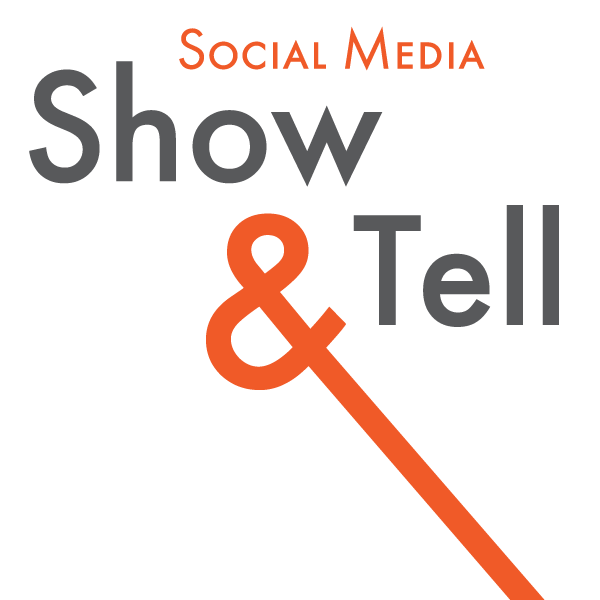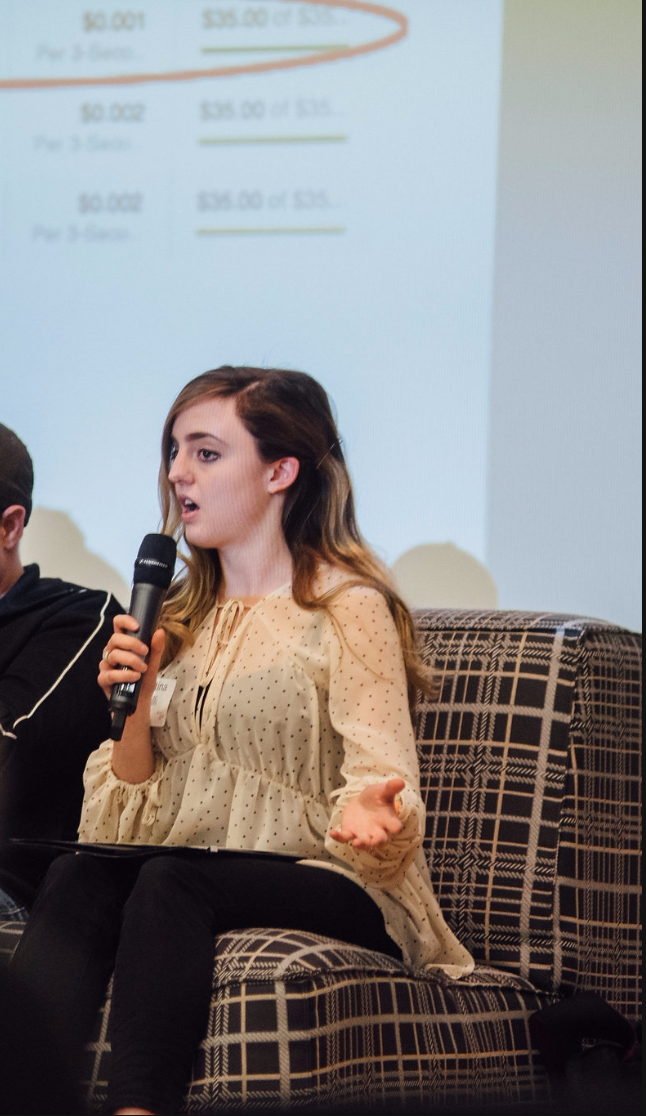Feb 2017 Recap
This past Monday, we hosted our second Show & Tell event! This time, we packed the Beer Hall with over 150 social media enthusiasts! Even if you didn't attend, you probably saw us since #showandtell was the #1 trending hashtag in Cincinnati.
This quarter, we were joined by (L:R) Tim Schmoyer (Video Creators), Levi Bethune (Cladwell & Cloverleaf), Christina Duccilli (Rookwood Pottery), Nate Engels (Northlich & Wannabite), and Lucrecer Braxton (Hello Friend Podcast & ItsLucrecer.com). Of course, our CEO Matthew Dooley (middle) was the moderator.
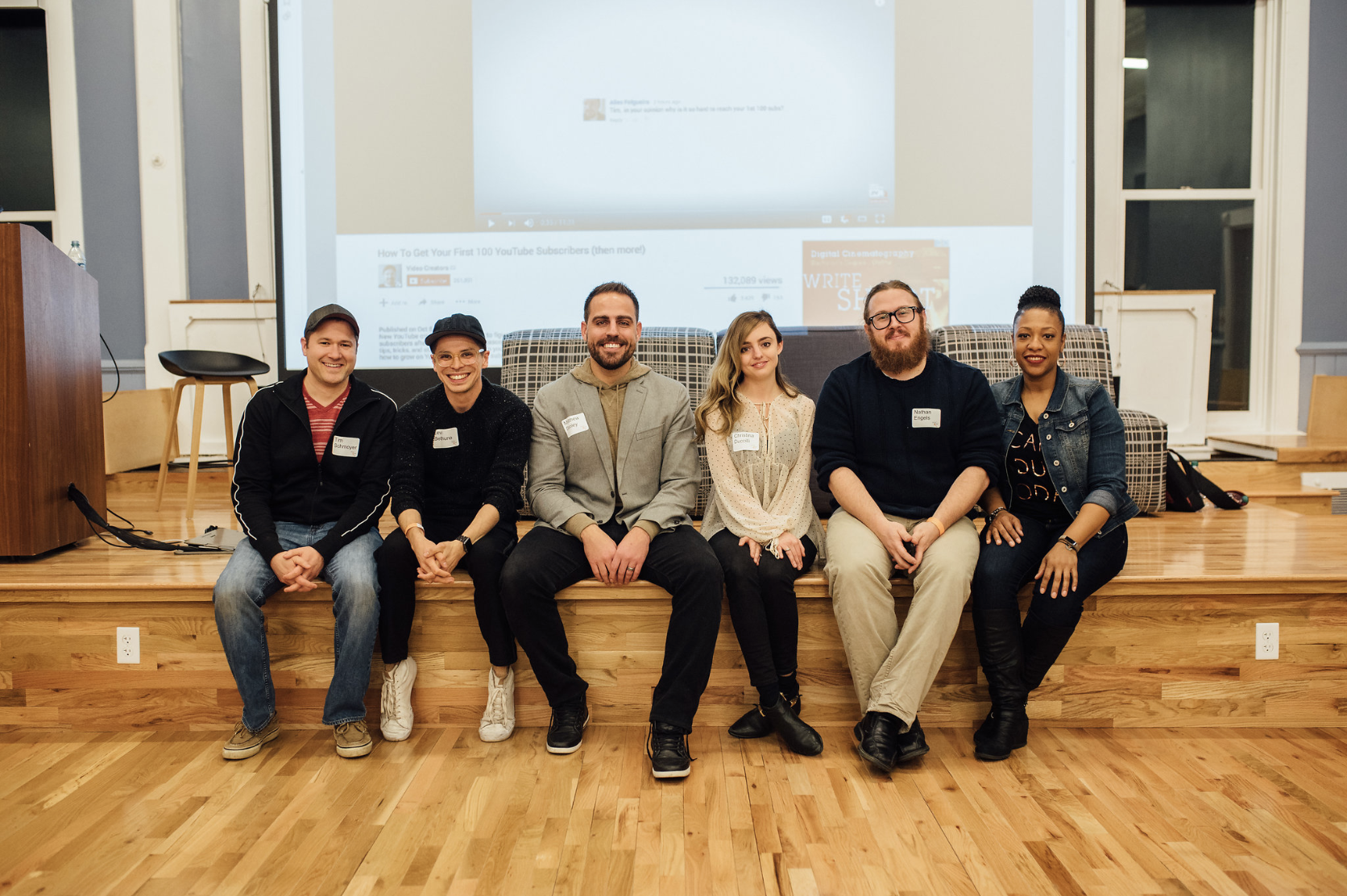
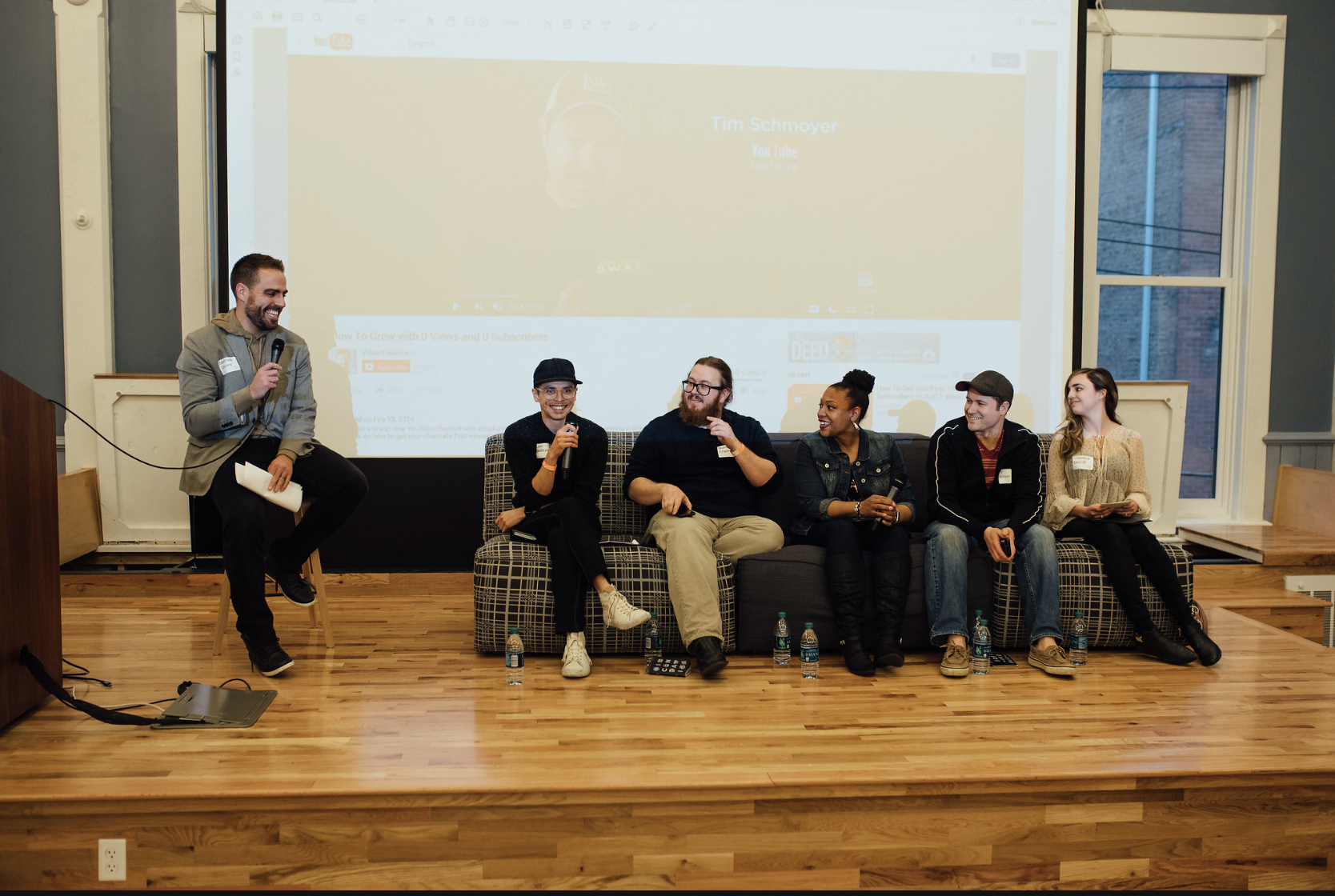
These five social media thought leaders provided new insights to any and all questions asked during the 2-hour event. Questions focused on three key topics: visual storytelling, community building, and customer acquisition.
Shoutout to Ironhouse Studios for this amazing video!
SO, WHAT WERE OUR FAVORITE INSIGHTS?
Levi started the night off with a bang: "If you want to tell a story, ask yourself what the purpose of that story is. Everyone’s and every brand's purpose is different. Do you want your audience to take action? What do you want someone who sees this story to do? The purpose of storytelling is to get someone to do something. What do you actually want people to do? Understand something? Buy something? Your brand does not belong to you! It belongs to your audience. You can herd them like sheep, but you cannot control what they’ll do.” Too many brands focus on where they want to go as a company, while they tune out their audience or users. Your consumers control your fate so you better listen to what they’re saying!
Tim provided some key insights about listening to your audience: "Ask yourself, 'What does my audience want?' Put yourself in their shoes and answer 'Is this something I want to see? Do I care?' You have to be able to let your audience know that this story is something that interests them, and that it is something they care about.” From a content stand point, you have to know what your audience is genuinely interested in or else the content will flop. Users have your business' success in their hands so if you aren't listening, bad results will be sure to follow.
Before you listen to an audience though, you have to start somewhere. Lucrecer wasted an entire year trying to plan the launch of her podcast... a whole year! So when crafting your content, how do you know where to start? This is where Lucrecer jumped in: “Talk about what interests you, not what you think others are interested in. Once you start there, you start building an audience around your interests, and not what you think other people are interested in. Every day you live can be a story - your days aren't boring! A boring day to you might not be a boring day to someone else.”
What about live storytelling? Nate hopped in to tell a story about his daughter: "One time when I was live [recording], my daughter didn't realize that we were actually live. She usually sits on my lap when I edit or when she does interrupt me I can edit it out. But this time she got a little mouthy and hit me! So I was surprised and didn’t know how to react because I couldn't punish her... because we were live… so I had to let it go and keep going while she wasn’t being the best. That just goes to show that life is risky. It’s so risky! But it's where a lot of content and stories are going now, and people recognize and relate to live videos more than a super polished video."
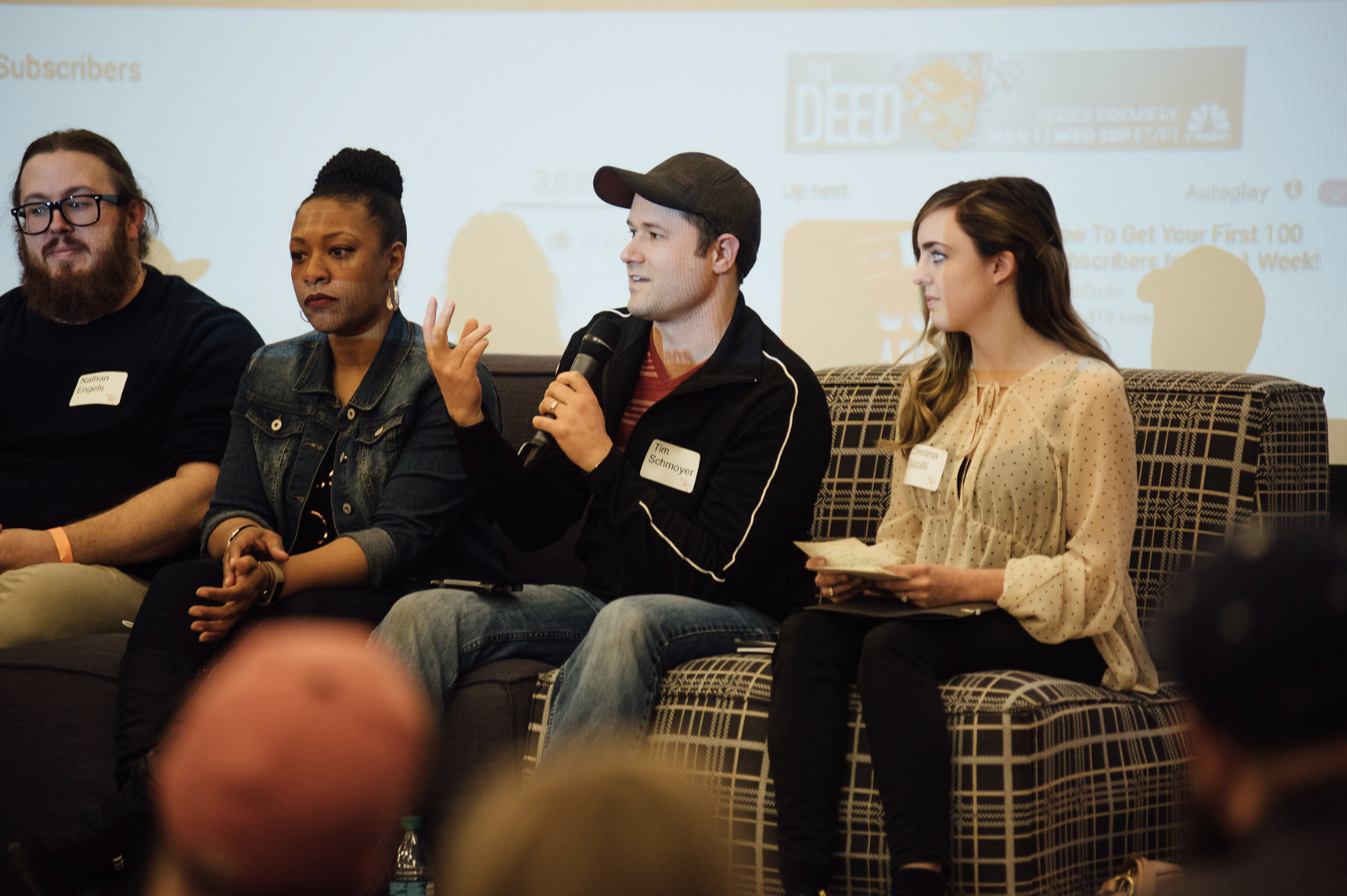
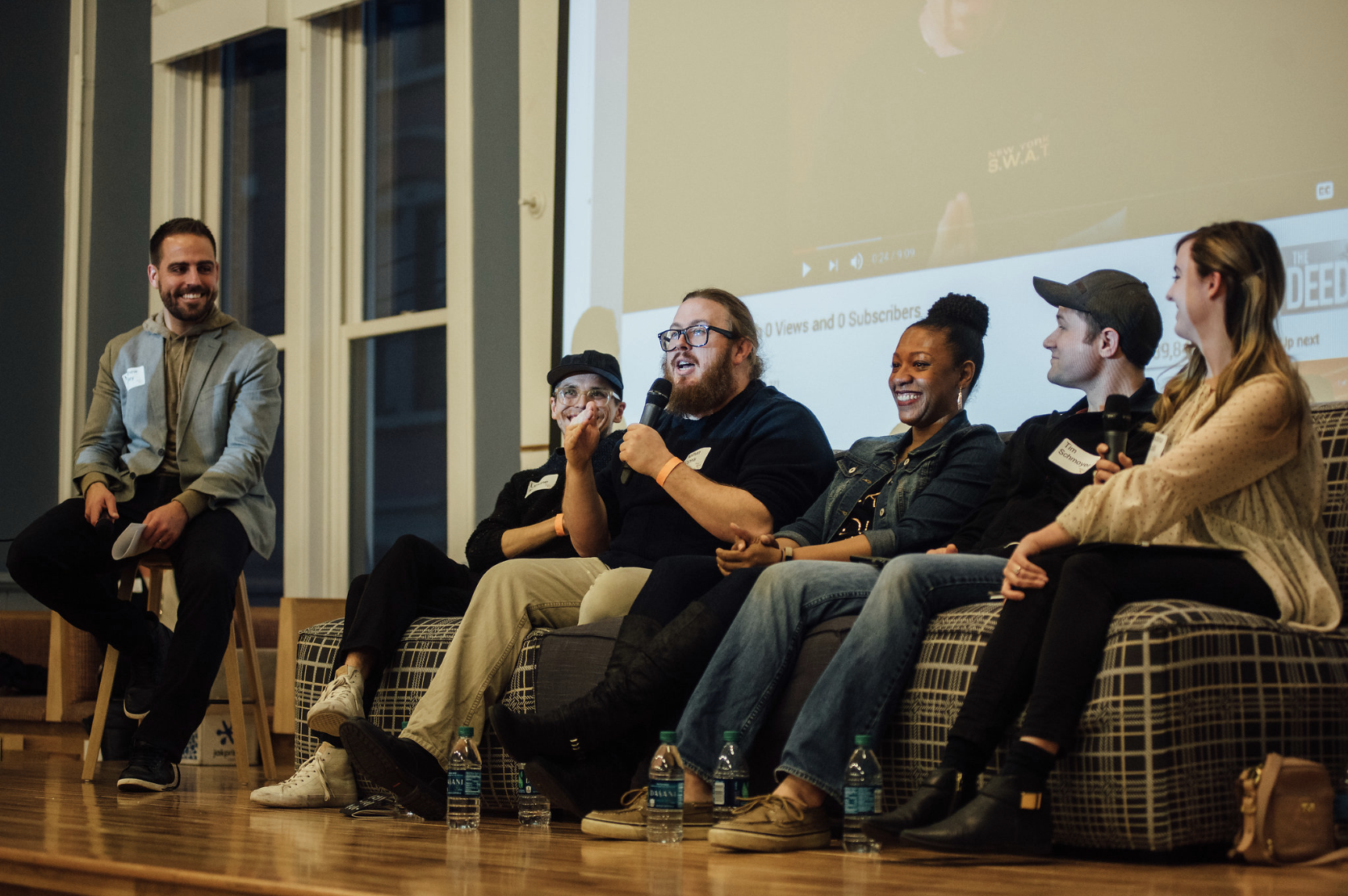
If you're starting to adopt live video into your content creation, practice practice practice. It's just like riding a bike: the more you do it, the better you'll be. Live video has a lot of risks associated with it especially when your brand is at stake. Lucrecer gave us a key tip for developing your live video skills: "I wanted to get into live video because it helps you tell stories really well. I went all-in on Periscope each day for 30 days. I started streaming every day at 7am. I just showed what was interesting to me, and people were interested. I started telling my stories, and I realized that people were interested in what I was interested in." Building a high-quality audience helps you tell better stories. Lucrecer went on: "I went live at 7am with morning motivation. I would find a quote, and talk about how it affected me. Then at 7pm, I would do something more casual, change out of my work clothes, take off my makeup, let the kids run around… it created a more real story. Being consistent with your content publishing helps to build an audience, and you TELL them to share - NOT ASK them to. Make sure to tell them who you are and what you do because you're bringing in new audience members every time. Pick one live platform and go all in for 30 days."
If live isn't a part of your content, then how can you ensure that your content doesn't become repetitive or bland? Christina, who works with a very photogenic product category, had the answer. "I start by coming up with a story or special moment behind each product we shoot. I start by storyboarding, where I put what’s in my head on paper. Then I'll get with the photographers to brainstorm and create these really impactful stories rather than just a product image. Rather than just posting a picture of a new mug, we post that mug as a part of a story. Think about drinking coffee out of your favorite mug, or putting Valentine’s Day flowers in the perfect vase. That content has a higher impact on you as a consumer than a picture of a mug with a white backdrop."
PRACTICAL TIPS
There were some awesome nuggets throughout the event that you can apply TODAY...
- Hijack an existing hashtag vs. feeling the need to create something original - Levi combined his brand's mission with an existing hashtag (#takethetime) to build his campaign from a strong foundation vs. starting from scratch.
- Tell your community what you need them to do - don't assume your followers know what you want them to do, and don't just ask them...tell them. Nate made a great point that during a live recording, tell viewers to Like or Heart to express their opinions. The result is not only active engagement, but also a video that's propagated to your audience's audience.
- Spend as much time on a video thumbnail and title as you do creating the actual video - especially on YouTube, potential viewers are making choices of what to watch mostly based on the preview. Tim suggests testing multiple variations via Facebook, waiting to see which ad Facebook puts your budget toward and then using the best-performing ad/copy for your final video. In other words, the best videos you see on social media are first beta launched.
- Commit to (local) influencers AND follow-through - it's not enough to just invite people in, you have to engage and nurture them from start to finish. Lucrecer shared an example where she was invited to promote a specific product, but then the company got rid of the product line and proceeded to leave their influencers hanging. Not a good move, and the goodwill they engendered not only went away but turned negative. Think long-term with your influencer strategies and, as Lucrecer would further emphasize, leverage people from your local community - you don't always have to fly in people from other states, or even pay models and/or celebrities.
RECAP: OUR 3 KEY TAKEAWAYS:
1. Quality is better than quantity. Everyone wants a million followers on any platform, but does that mean anything when there's no engagement? Tim started his YouTube channel talking about life... literally anything that was happening around him! While he was creating content around what interested him, his audience slowly grew and the comments started coming in. What Tim realized was that, as he grew this quality audience, the audience was commenting with problems/situations that he was experiencing himself! Growing a solid, authentic community is what allowed Tim to create content that he wanted to produce.
2. Live Video: make the commitment. If you want to produce live videos as a part of your brand's content, you have to practice and commit. Lucrecer went all-in for 30 days which allowed her to grow an audience while telling authentic stories. Commit, be consistent, and tell your own stories.
3. Listen to your audience! Every single brand lives and dies by their audience. You may think that your audience is going to love this new video you've produced, but you don't represent them. Take the time to listen before you speak. If you take that extra little effort, you'll know what content to produce. Nate touched on paid ads as a great way to put content ideas out there and see what performs well and what doesn't. Putting $5-$10 behind a post gives you the chance to experiment with your audience. As Levi said, "You can herd them like sheep, but you cannot control what they’ll do."
TOP TOOLS MENTIONED
Throughout the Q&A, there were a bunch of awesome tools recommended by our thought leaders. Here's a roundup...
- Canva - create awesome graphics without a design background
- Snapseed (iOS, Android) - enhance photos and apply filters from your mobile phone
- Hashtagify.me - for discovering the best hashtags to use for your content pieces
- SoundStripe - unlimited music for your videos for just $10/mo.
NEXT SHOW & TELL
Mark your calendars! Tuesday, May 23, 2017 at 6pm.
